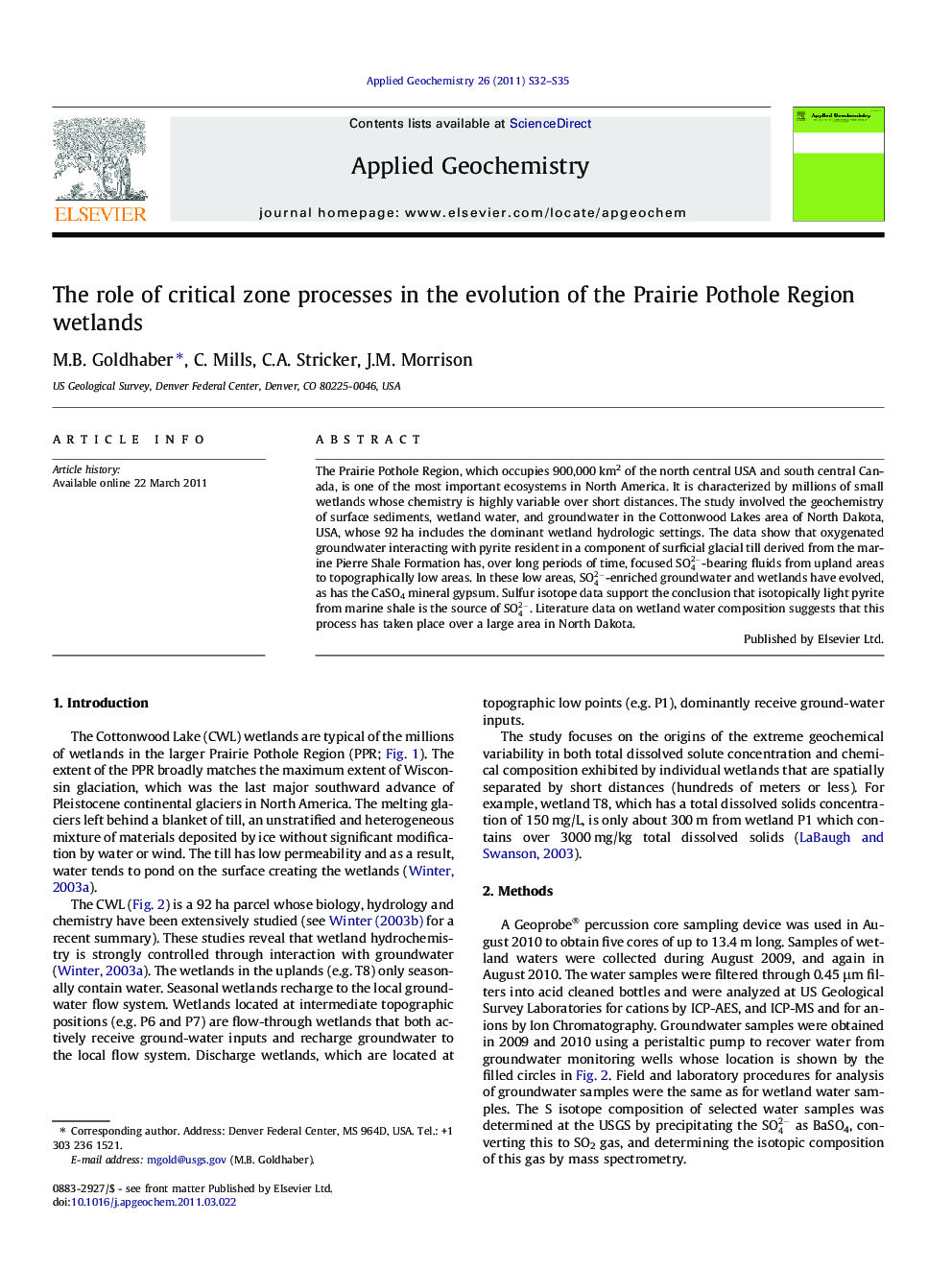| Article ID | Journal | Published Year | Pages | File Type |
|---|---|---|---|---|
| 4436453 | Applied Geochemistry | 2011 | 4 Pages |
The Prairie Pothole Region, which occupies 900,000 km2 of the north central USA and south central Canada, is one of the most important ecosystems in North America. It is characterized by millions of small wetlands whose chemistry is highly variable over short distances. The study involved the geochemistry of surface sediments, wetland water, and groundwater in the Cottonwood Lakes area of North Dakota, USA, whose 92 ha includes the dominant wetland hydrologic settings. The data show that oxygenated groundwater interacting with pyrite resident in a component of surficial glacial till derived from the marine Pierre Shale Formation has, over long periods of time, focused SO42--bearing fluids from upland areas to topographically low areas. In these low areas, SO42--enriched groundwater and wetlands have evolved, as has the CaSO4 mineral gypsum. Sulfur isotope data support the conclusion that isotopically light pyrite from marine shale is the source of SO42-. Literature data on wetland water composition suggests that this process has taken place over a large area in North Dakota.
► The geochemistry of Prairie Pothole wetlands in ND is governed by oxidation of pyrite. ► Pyrite oxidation progressively leads to sulfate dominated wetland and ground waters. ► The source of the pyrite is a component of glacial till derived from Cretaceous shale. ► The interval of pyrite oxidation is marked by a brown to grey color transition in the till. ► Pyrite oxidation is a slow process that has taken place over atleast a thousand years.
